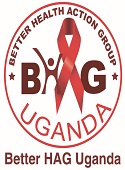Gender Based Violence (GBV)

There are overwhelming cases of GBV such as wife battering, forced and early marriages, widow inheritance, forced and excessive labor especially among women and girls, sexual coercion including rape (marital) and... Read More
Background
In November 2011, the organization receive funding support from UNFPA through American Refugee Committee to implement a project entitled; “A Roadmap to National Development: Ending Violence Against Women” in commemoration of the 16 Days of Activism against GBV 2011 where we unearthed a lot of GBV issues and experiences, identified gaps in assistance to the population we worked with, learnt a lot of lessons and drew several best practices for replication in future projects.
There are overwhelming cases of GBV such as wife battering, forced and early marriages, widow inheritance, forced and excessive labor especially among women and girls, sexual coercion including rape (marital) and defilement, women’s inability to negotiate safe sex, non spousal violence, female genital mutilation, denial of female ownership of property, widow expulsion; among others; most of which have now been unearthed by several media and research reports.
Worse to note here is the fact that most of the victims of GBV are not aware of any law on GBV and therefore do not seek legal or professional assistance in the event of violence.
This therefore calls not only for operationalisation of national laws to fight Gender Based Violence in the Ugandan Society but also massive sensitization of communities on the existent of such laws and how best to apply them to stamp out GBV in homes and communities, if we are to realize the national theme “From Peace in the Home to Peace in the Nation: Lets End Violence against women”. In doing this though, there is need to involve key stakeholders, who in our opinion include but not limited to; cultural, clan and traditional leaders (heads of customary laws and customs-which are in most cases permissive of violence against women and girls) as well as religious leaders in respective communities of intervention.


